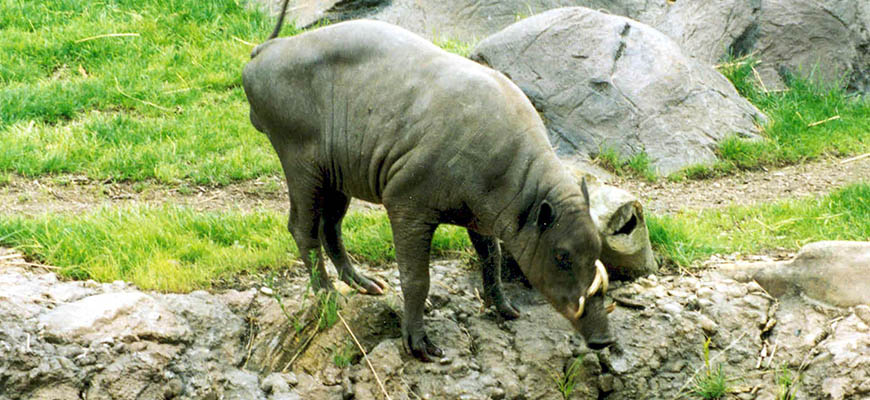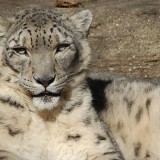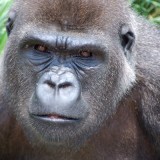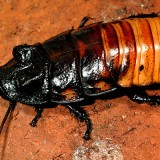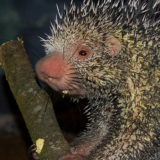CLASSIFICATION
Class: Mammalia
Order: Artiodactyla
Family: Suidae
Genus: Babyrousa
Species: babyrussa
RANGE
Found on Sulawesi, Togian, Sula and Buru Islands in the Indonesian Archipelago.
HABITAT
Moist to marshy forested areas along lake shores and riverbanks.
SIZE
Body Length: 34 ¼ to 42 inches (90–110 cm)
Height: 25 to 32 inches (65–80 cm)
Tail Length: 10 ½ to 12 ½ inches (27–32 cm)
Weight: Up to 220 lbs. (100 kg)
REPRODUCTION
Babirusa have been observed living singly and in small family groups. Gestation lasts between 125 and 150 days and at birth the young are 6 to 8 inches (15–20 cm) long. Generally only one or two offspring are born since the mother only has two nipples for nursing. This characteristic of only having two mammaries is one of the things that suggests that Babirusa are very primitive members of the pig family. Twins are always of the same sex. Unlike most other wild pigs, the babies do not have stripes. Babirusa mothers are very aggressive when defending their young.
DIET
Wild: Roots, berries, tubers, leaves, insect larvae, and fruits.
Zoo: Pelleted diet high in fiber, vegetables, fruit, timothy and alfalfa hay.
BEHAVIOR
Diurnal. Babirusas prefer forested swamps and dense reed thickets for hiding and wallowing. Babirusa are known to be very good swimmers and have been observed crossing rivers and wide inlets into the sea in their search for food. During their search for food they have been observed occasionally digging insect larvae out of rotting trees. As in most species of pigs, babirusa vocalize through grunting and squeaking noises and when excited, they will chatter their teeth.
POINTS OF INTEREST
Babirusa are considered unusual among the wild pigs of southeast Asia, mainly due to their unusual appearance. The head is very small and they have a pronounced arched back and long slender legs. The skin looks naked from a distance and can either be smooth or wrinkled. The thickness of their coats varies within the four different subspecies. The most striking feature is the size of the upper canine teeth, which can reach a length of over 12 inches in males and can be observed growing through the upper cheeks. In some older males these large canines can grow in a circle and back into the upper jaw where they first emerged. These tusk-like teeth are relatively brittle and are probably used to ward off an opponent’s attack, as opposed to actually being used to pierce flesh in the use as a weapon. These large unusual canines have led to numerous legends and myths among native peoples in the region. Malayans claim that the babirusa can hang from the branches of trees with their teeth. The German term for this animal is “hirscheber” which means “deer boar”.
STATUS
Vulnerable, mainly due to over hunting and habitat destruction.
BIBLIOGRAPHY
Grzimek’s Animal Life Encyclopedia, Dr. Dr. h. c. Barnard Grzimek, Editor-in-Chief, 1972
MacMillan Illustrated Animal Encyclopedia, Edited by Dr. Phillip Whitfield, 1984
The Encyclopedia of Mammals, Edited by Dr. David Macdonald, 1985
Larousse Encyclopedia of Animal Life, 1967

